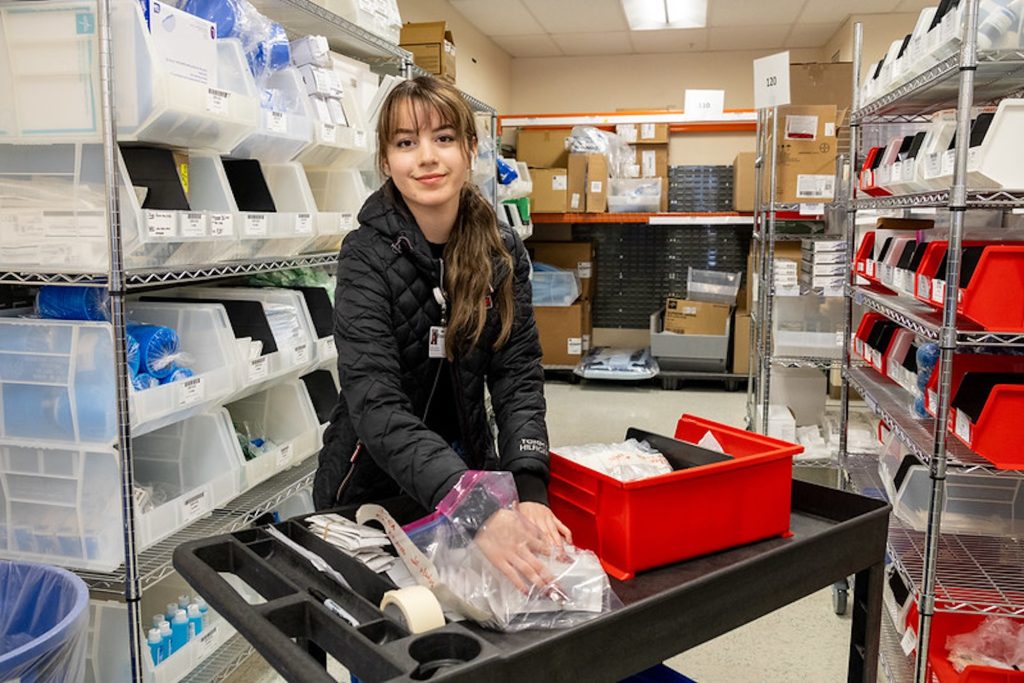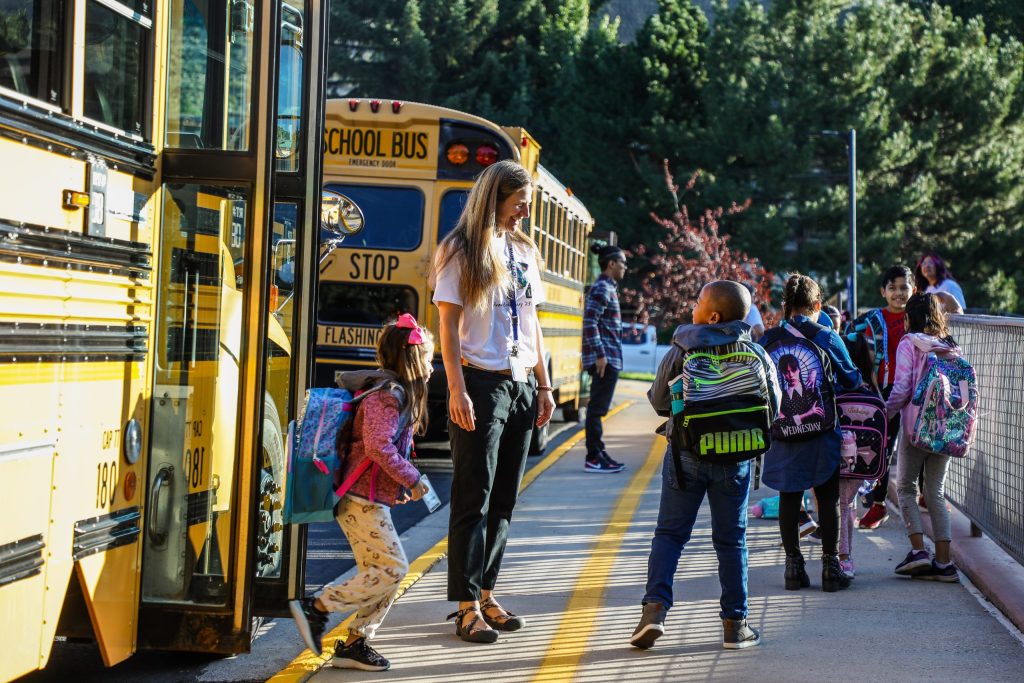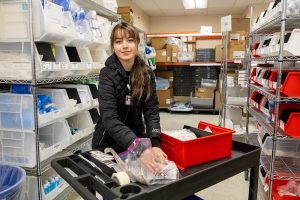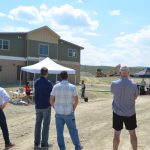With fewer young workers, Western Slope employers are working on creative solutions to shrink the labor gap
Lower birth rates and cost-of-living issues that deter workers from relocating have contributed to shortages in fields like health care and education

Courtesy photo
Facing a shortage of skilled professionals across mountain resort towns, some business leaders are working on creative solutions to fill open jobs.
The Western Slope’s shifting demographics and cost of living challenges are no secret to businesses looking to hire, nor to professionals looking for work. Lower birth rates and cost-of-living issues that are forcing residents to seek work elsewhere, as well as deterring workers from relocating to mountain communities, have contributed to shortages in fields like education and health care.
In June, industry and community leaders met at the region’s first Northwest Regional Talent Summit to “discuss much-needed career pathway solutions” to ensure that Colorado workers are developing the skills employers need.
The summit, hosted by the Colorado Office of Economic Development and International Trade and the Vail Valley Partnership in Edwards, is part of a statewide series addressing workforce challenges across seven geographic regions in the state. The summits were brought back by House Bill 24-1365 after a roughly 10-year pause, according to Misti Ruthven, director of talent innovation for the Colorado Office of Economic Development and International Trade.
“We know that we have demographic challenges. We know that we have cost-of-living challenges,” said Chris Romer, president and CEO of Vail Valley Partnership. “The shared goal is, how do we reduce the shortage of skilled professionals?”
The summit focused on addressing the needs of the construction, health care, and tourism industries, which regional data identified as the main economic drivers across Eagle, Grand, Jackson, Pitkin, Summit, Routt, and Park counties.
“We spent a lot of time really listening to the voice of business,” Ruthven said. “The things we heard … were also about training and really thinking about, ‘How do you train local talent for local jobs?'”

Demographic challenges: Where did all the workers go?
While there is some variation across counties, data from the Colorado Department of Local Affairs’ state demography office shows declining birth rates across the state, which is not unlike what other states are seeing across the nation.
Children born in 2007 — around when birth rates peaked in Eagle County — are now 18, meaning the region’s youth population is slowly shrinking, Romer said.
“Every year since, there’s been fewer people in that workforce pipeline,” he said. “The math doesn’t work when we have shortages of people to fill jobs today, and there’s no significant pipeline to fill those jobs in the future.”
The population issue is twofold: While it’s clear that some counties in the Western part of Colorado are experiencing lower birth rates compared to the Eastern plains, others are also seeing fewer workers relocate for jobs due to the cost of living and limited housing options as more people purchase second homes. Of the ones who do permanently relocate to Colorado’s mountain communities, most are adults.
“From 2020 to 2023, we saw a loss … of our population in Eagle County. We know there’s fewer people coming in, and we know that more people are leaving,” Romer said. “How does that impact our businesses?”
For the broader Western Slope, residents leaving for opportunities in other parts of the country isn’t having as large of an impact on population, according to a spokesperson with the state demography office, as some mountain areas are still bringing in more people than they’re losing. Any counties experiencing a decrease in population are likely seeing a larger natural decline — more deaths than births — as opposed to changes in net migration.
Eagle, Garfield and Moffat are among the Western Slope counties with the highest birth rates, with around 15 births per 1,000 people. Pitkin, Routt and Grand counties are on the lower end, with 10-12 births per 1,000 people.
Year-to-year population change for these counties since 2000, however, has remained relatively neutral, and some population estimates show more people will be living in the Western Slope region by 2050.
Still, the number of deaths in Colorado has increased over time in direct correlation with an increased number of older adults, according to the department’s population summary report. All of these factors together create an interesting picture for workforce challenges in the state: less young people learning trades that are crucial to the state’s economy.

The biggest challenge: Attracting, hiring and upskilling
When it comes to industry-specific needs, finding, retaining, and improving a workforce can present different challenges.
One of the health care sector’s biggest challenges, according to participants at the summit, is acquiring the necessary staff and resources to grow the skills of early-career employees so that they can move up the ladder in their communities.
“We talked about things like radiology technicians,” Romer said. “How do you upskill and provide a career pathway for people when they come in at a more entry-level position … so they don’t leave?”
The tourism sector, for example, has struggled to make itself more attractive to potential workers and students who may see it as a pure service sector job without understanding the diverse career pathways it can offer.
According to Romer, there’s a big need for work-based learning opportunities at the high school and college level that will help students acquire the technical skills needed for construction work.
“How do we work with the school districts on career and technical education to expose kids to the opportunities that exist and the good-paying jobs that exist that they might not know about?” Romer said.
A silver lining for mountain town businesses
Ruthven said one of the department’s attempts at a solution to the state’s workforce challenges has been a workforce mapping project that works with different industries to identify local training opportunities. The overall goal, she said, is to fill workforce gaps locally instead of hiring from out of state.
The department is also launching an adult apprenticeship program to build on the success of its existing youth apprenticeship program.
“The summit really reinforced the need for us to have pipeline and career opportunities, not just for youth, but for maybe seasonal workers or young adults looking for a career shift, or mid-career folks who are looking to move from one industry to another industry,” Romer said.
The department’s efforts also build on the Opportunity Now grant, initiated by Gov. Jared Polis and the Office of Economic Development and International Trade, which invests $100 million into all 64 counties to help connect businesses with education and fill critical gaps in the local workforce.
“There are several investments in your backyard,” Ruthven said. The program’s goal is to place 10,000 to 20,000 Coloradans into local jobs, with a focus in education, construction, health care, technology and more.
One of these $3 million grants was awarded to a project in Steamboat and Craig to support rural talent networks. Opportunity Now grants have also been awarded to aid students in becoming full-time teachers in Western Slope school districts, many of which are understaffed.
Many of the solutions currently in the works will require collaboration with school districts and local higher-education institutions like Colorado Mountain College, which also participated in the June summit.
“This whole thing requires collaboration between industry, education and public sector representatives,” Romer said. “Without all three of them at the table aligned on the importance and on the effort, it’ll really fall apart.”

Support Local Journalism

Support Local Journalism
The Sky-Hi News strives to deliver powerful stories that spark emotion and focus on the place we live.
Over the past year, contributions from readers like you helped to fund some of our most important reporting, including coverage of the East Troublesome Fire.
If you value local journalism, consider making a contribution to our newsroom in support of the work we do.







